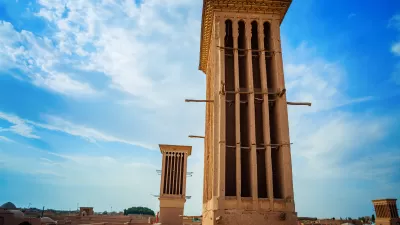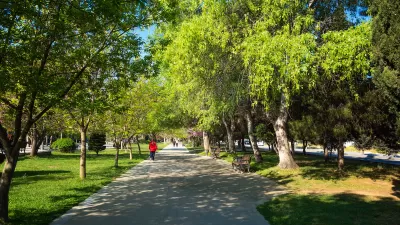Air conditioning has drastically changed modern life and the ways cities have developed. But, the environmental consequences are immense, and it’s time to cut back.

"Buying an air conditioner is perhaps the most popular individual response to climate change, and air conditioners are almost uniquely power-hungry appliances: a small unit cooling a single room, on average, consumes more power than running four fridges, while a central unit cooling an average house uses more power than 15," writes Stephen Buranyi in a feature piece that traces the history of air conditioning.
There are more than 1 billion single-room air conditioning units in the world today, and that number is expected to rise to 4.5 billion by 2050. But air conditioning was not always the norm, says Buranyi. Before the late 1940s, it was a novelty, but then it took off in the United States as builders and architects looked to put homes in inhospitable climates and energy companies worked to increase consumer demand.
Since then, air conditioning has helped fuel urbanism and the rise of cities around the world as part of the spread of globalization. Solutions to addressing the use of air conditioning include improving the technology, reclaiming design strategies that worked before air conditioning was available, and changing the perception that it is a necessity. "Cutting down on air conditioning doesn’t mean leaving modernity behind, but it does require facing up to some of its consequences," notes Buranyi.
FULL STORY: The air conditioning trap: how cold air is heating the world

Trump Administration Could Effectively End Housing Voucher Program
Federal officials are eyeing major cuts to the Section 8 program that helps millions of low-income households pay rent.

Planetizen Federal Action Tracker
A weekly monitor of how Trump’s orders and actions are impacting planners and planning in America.

Ken Jennings Launches Transit Web Series
The Jeopardy champ wants you to ride public transit.

Rebuilding Smarter: How LA County Is Guiding Fire-Ravaged Communities Toward Resilience
Los Angeles County is leading a coordinated effort to help fire-impacted communities rebuild with resilience by providing recovery resources, promoting fire-wise design, and aligning reconstruction with broader sustainability and climate goals.

When Borders Blur: Regional Collaboration in Action
As regional challenges outgrow city boundaries, “When Borders Blur” explores how cross-jurisdictional collaboration can drive smarter, more resilient urban planning, sharing real-world lessons from thriving partnerships across North America.

Philadelphia Is Expanding its Network of Roundabouts
Roundabouts are widely shown to decrease traffic speed, reduce congestion, and improve efficiency.
Urban Design for Planners 1: Software Tools
This six-course series explores essential urban design concepts using open source software and equips planners with the tools they need to participate fully in the urban design process.
Planning for Universal Design
Learn the tools for implementing Universal Design in planning regulations.
Ada County Highway District
Clanton & Associates, Inc.
Jessamine County Fiscal Court
Institute for Housing and Urban Development Studies (IHS)
City of Grandview
Harvard GSD Executive Education
Toledo-Lucas County Plan Commissions
Salt Lake City
NYU Wagner Graduate School of Public Service





























